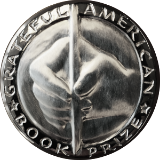November 16 — November 30, 2021
History Matters
Showing our children that their past is prelude to their future
On November 19, 1863, Gettysburg National Cemetery was dedicated by a coterie of celebrated patriots which included the renowned orator, Edward Everett. He spoke two hours; President Lincoln’s speech was two minutes.
Nobody remembers Everett’s words, but Lincoln’s 275–the Gettysburg Address–remains memorable, significant, and relevant.
The president had traveled there by train a day earlier to unify his thoughts, which he scribbled on the back of an envelope. Shortly after he had dinner, Lincoln finished writing.
Henry Jacobs, a witness to the event, was so moved by Lincoln’s remarks as he stood in front of the speaker’s stand, that he felt compelled to record his thoughts:
“At first his voice sounded a little strained and high-pitched, as if he were trying to throw his voice to the outer edge of the crowd. He held in his right hand the manuscript he had brought from the White House… He emphasized the words ’of,’ ’by,’ and ’for’ (the people} with a stiff yet sweeping bend of his body, holding the manuscript rigidly in both hands…. Then he drew himself up to his immense height, with his arms outstretched, as he impressively uttered the final words, ’shall not-perish-from-the-earth.’”
For more information, the Grateful American Book Prize recommends Lincoln in His Own Words by Milton Meltzer.

It was one of the best kept secrets in the history of the American military: the creation of the world’s first stealth aircraft—a bomber that had a massive wingspan of 360 feet but was—for practical purposes—“invisible.” Radar tracking was almost impossible; it couldn’t be detected by infrared, sound detectors, or seen by the naked eye. It took ten years—of working in total secrecy—for Northrop [later known as Northrop Grumman] to design and build the B-2 Spirit a/k/a Stealth Bomber.
News that America had such an important piece of weaponry was divulged at a November 22, 1989, news conference at Air Force Plant 42 in Palmdale, California.
For more information, the Grateful American Book Prize recommends Inside the Stealth Bomber: The B-2 Story by Bill Scott.

Before DNA was used in 1984, criminal investigations were little more than guesswork. But that did not prevent the FBI from establishing its first crime lab on November 24,1932; in a one room, one man facility, at its headquarters, Agent Charles Appel, who was in charge, had a microscope to find, identify, and compare “trace evidence,” plus a helixometer to help him inspect gun barrels:
But, according to History.com, “it was actually more for show than function.”
FBI Chief J. Edgar Hoover supposedly used the Lab for public relations purposes, but over the years, the Agency amplified its use of technology. By 1938 its Scientific Crime Detection Laboratory was engaged in scientific analysis of handwriting, typewriting, and fingerprints.
The Grateful American Book Prize recommends Hard Evidence: How Detectives Inside the Fbi’s Sci-Crime Lab Have Helped Solve America’s Toughest Cases by David Fisher.

History Matters is a biweekly feature courtesy of The Grateful American Book Prize.




